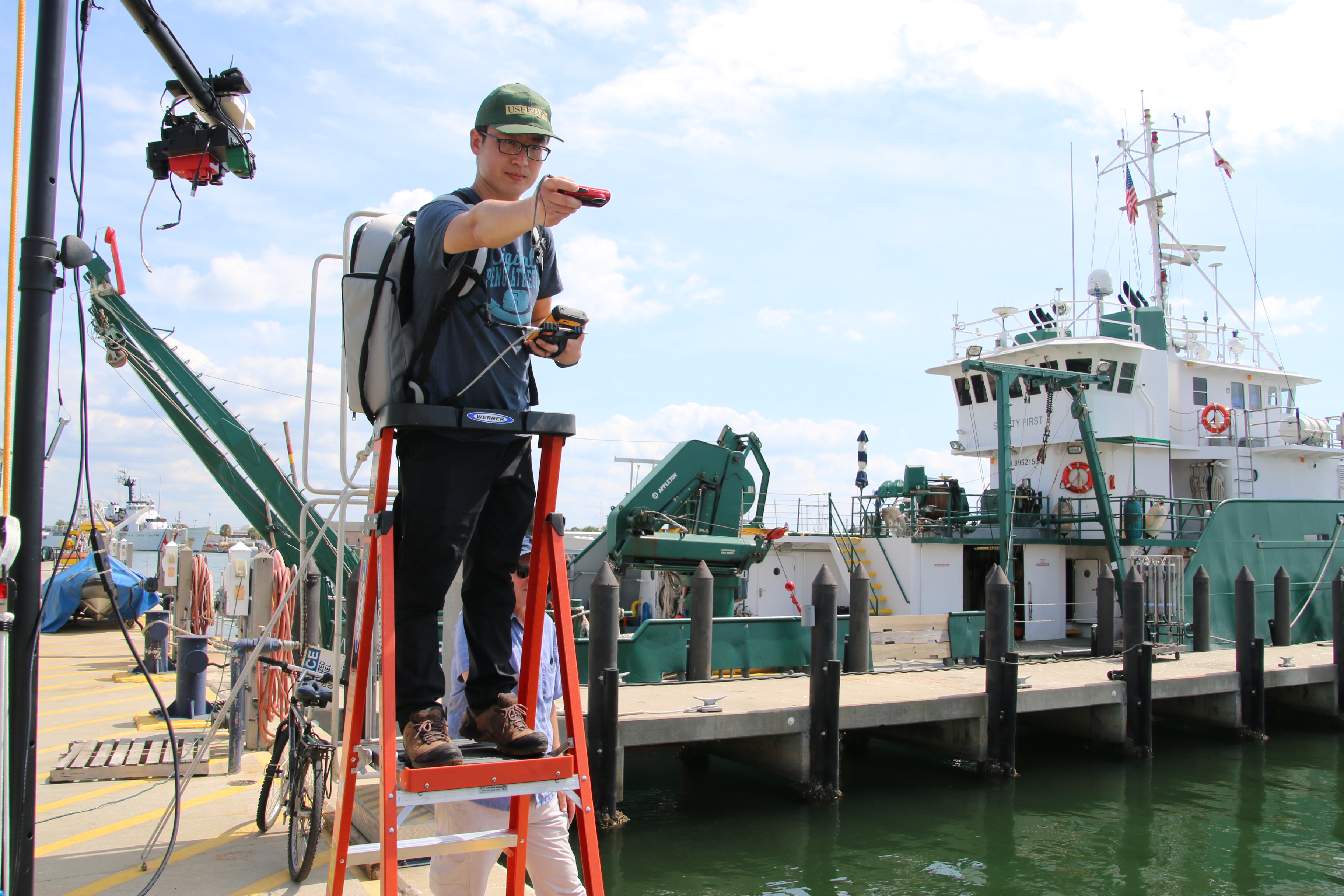Research
Physical Oceanography
Energy introduced to the ocean through wind and solar heating combines with the rotation of the Earth and gravitational effects to drive ocean circulation, tides, and waves. Physical oceanographers in the College of Marine Science (CMS) carry out research on a wide range of topics using the latest technology. Computer models, real time data, and satellite remote sensing, are combined with in situ data from moored arrays, coastal and island tide gauges, and research cruises to address topics such as tide and current prediction in Tampa Bay, circulation on the West Florida Shelf and in the Gulf of Mexico, El Niño, and the potential for global climate change.
The CMS is a member of the National Association of Marine Laboratories. Funding sources for physical oceanography research projects include the National Ocean Service, the National Science Foundation, the Office of Naval Research, and the National Aeronautics and Space Administration.
View our Physical Oceanography Faculty
Sample Research Group
- C-IMAGE - A global ten-year, $36.6 million research program to understand the impacts of the oil spills on the Gulf of Mexico.
- COMIT - a five-year, $9 million cooperative agreement with NOAA to develop new technologies and approaches to ocean and coastal zone mapping to help build resilient coastal ecosystems, communities, and economies.
- COMPS – a regional coastal ocean observing program along the Gulf of Mexico's west Florida coast that provides real-time data for emergency management and scientific use.
- CMPS – a cross-departmental center at USF whose mission is to promote workforce development for the maritime transportation industry, conduct research to foster resilient maritime and port infrastructure and operations, and provide independent testing and evaluation of maritime sensor technologies.
